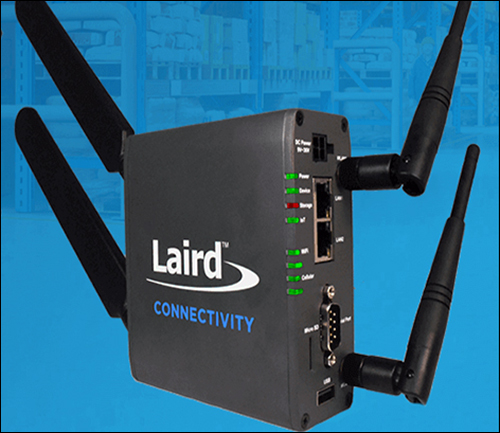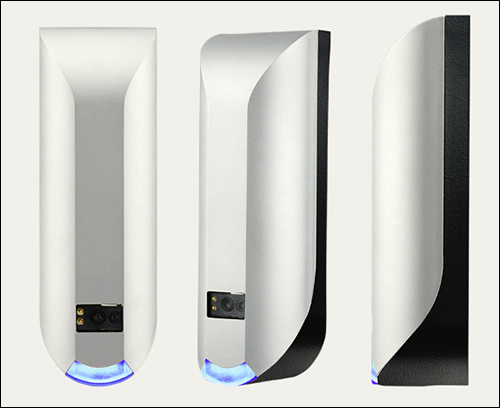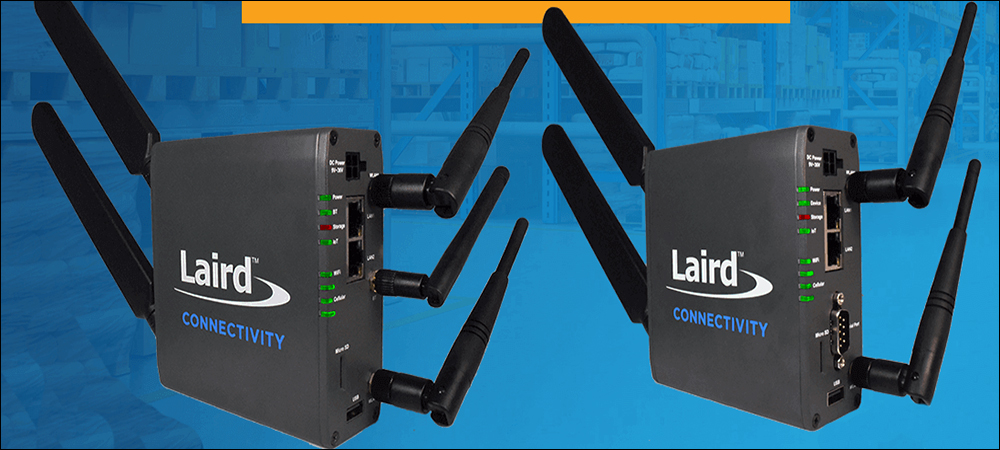Presented here are news announcements made during the past week by the following organizations: Arrow Electronics, Panasonic Industry, STMicroelectronics, the NFC Forum, ProGlove, Laird Connectivity, and Nedap.
Arrow Electronics, Panasonic Industry, STMicroelectronics Offer IoT Modules
Arrow Electronics, Panasonic Industry and STMicroelectronics have introduced a low-power wireless multi-sensor edge-intelligence solution for smart-factory, smart-home and smart-life applications. According to the companies, the IoT Solution Module combines Arrow’s engineering and global distribution capabilities with Panasonic Industry’s IoT modules based on the ST BlueTile (STEVAL-BCN002V1B) multi-sensor development kit.
This enables customers to test ideas and bring new IoT products to the market. The IoT Solution Module features ST’s latest BlueNRG Bluetooth Low Energy (BLE) 5.0 system-on-chip (SoC) paired with numerous inertial, environmental and audio sensors. The onboard sensors enable a range of compact IoT applications for smart-factory, -home and -life scenarios.
The system includes an accelerometer and a gyroscope with time-of-flight, pressure and humidity sensors, in a low-power design with Bluetooth communications. This enables OEM customers to reduce time-to-market and decreases design expense and complexity using certified modules. “Building on the outstanding features and design of the ST BlueTile sensor-node development kit, the modules now available from Panasonic Industry through Arrow Electronics are ideal for speeding creation of a wide range of edge-node sensors for all kinds of Internet-of-Things applications,” said Philip Lolies, ST’s VP of marketing and application for EMEA, in a prepared statement.
“Panasonic’s IoT Solution Modules, inspired by ST BlueTile, support customers by cutting down their time to market in this fast-paced era,” added Dr. Sara Ghaemi, Panasonic Industry’s team leader for IoT, in the prepared statement. “Panasonic Industry is able to offer an unrivaled customer service throughout all stages of the product lifecycle ranging from design, development and validation to aftermarket. The modules support customers in reducing their development efforts and overall product costs while guaranteeing the highest quality and required certifications. This new solution will serve the customer’s needs in smart factory, smart home and smart life applications.”
“The modern embedded design requires sensors and wireless connectivity. This is accelerating based on the breadth of wireless standards being integrated into products,” said Matthias Hutter, Arrow’s VP of product management and supplier marketing for EMEA, in the prepared statement. “However, using sensors and designing the supporting circuitry for the task would take a lot of time and resources to develop. Additional certification time is needed on top. Using pre-qualified wireless sensor modules in the system design is saving development time and budget which speeds up time to market for our customers. By working with ST and Panasonic we are bringing the fundamental sensor and wireless building blocks in a great package for accelerated design.”
NFC Forum Adopts Bi-directional Communication Between Smartphones, IoT Devices
The NFC Forum, a global standards and advocacy association for Near Field Communication (NFC) technology, has announced that its Board of Directors has approved and adopted the Tag NFC Data Exchange Format Exchange Protocol Specification (TNEP), as well as an updated version of the Connection Handover Technical Specification (CH 1.5).
The TNEP specification defines the bidirectional exchange of data between an NFC-enabled phone and an IoT device implementing tag and reader functionality. When combined with the CH 1.5, the organization explains, TNEP enables new NFC, Bluetooth and Wi-Fi negotiated and mediated handover solutions by using the reader-writer mode, regardless of the smartphone operating system (OS).
“The adoption of the TNEP specification means that IoT device manufacturers can now use components implementing the protocol for tag communication to create more cost-efficient designs and expand connectivity options,” said Koichi Tagawa, the chair of the NFC Forum, in a prepared statement. “Together with CH 1.5, the two specifications offer an ideal solution for microcontroller-based designs for IoT devices.”
The TNEP and CH 1.5 were published last year as Candidate Specifications. After a validation process, the NFC Forum is now able to publish these specification as adopted Technical Specifications, ready for market implementation. TNEP is based on the standard procedure to read and write to an NFC Forum tag, meaning that all NFC-enabled smartphones allowing their apps to read and write tags are capable of supporting TNEP using an app. These apps are able to establish a bidirectional NFC communication link to IoT devices without the need to implement the Logical Link Control Protocol (LLCP) for peer-to-peer communication (P2P).
Bidirectional communication with IoT devices means NFC-enabled smartphones can read the actual state from the IoT device and change the configuration of the IoT device by using write operations. It can configure an audio system, a digital camera, a lightning system, a smart meter or a radiator valve, for example.
The updated version of CH 1.5 is the first NFC Forum specification to take advantage of TNEP, the organization indicates. By defining the messaging structure for how negotiated handover operates with a reader-writer and an NFC tag device, CH 1.5 creates the possibility for the development of new solutions pairing NFC with Bluetooth or Wi-Fi when the data to be transferred is large or streamed for a long time. Examples include Bluetooth audio streaming or transfer of a photo between a digital camera or a smartphone over Wi-Fi.
Previously, negotiated handover was limited to a P2P connection. CH 1.5 can now use TNEP to allow an additional negotiated handover for a connection between a reader-writer and an NFC tag device, providing users with greater control of how they gather and share their information between devices. This, in turn, increases the security of paired connections.
ProGlove Provides Social-Distancing Sensors for Factory Floor
ProGlove, a provider of ergonomic wearables for industry, says it is responding to customers’ needs in manufacturing, distribution and logistics for a smart solution to help workers maintain proper social distance. Leveraging its MARK family of wearable barcode scanners and its ProGlove Connect app for Android, ProGlove has announced a product upgrade that activates proximity sensing for frontline workers. With production lines resuming operations, the company explains, safety and efficiency are top of mind.
“Our key customers are sharing with us the challenges they’re facing as they rethink and retool to restart operations,” said Andreas Koenig, ProGlove’s CEO, in a prepared statement. “We faced similar challenges as we reviewed our own processes for safety and efficiency. It is our natural tendency, as humans, to want to go back to doing things the way we did them before; however, it’s not possible. Proper social distancing is now key to a successful return to work.”
To help workers maintain proper distance from each other on an assembly line or at a distribution center, ProGlove’s Connect Proximity app provides an additional layer of feedback on an Android device, either alone or when paired with a ProGlove MARK barcode scanner, which rests on the employee’s hand. When personally equipped with the MARK wearable scanner and paired Android device, workers coming within close proximity of each other are alerted. The alerts come to the workers via a range of options on the wearable scanner, including audio sound, optic LED light and haptic vibration signals. This is important in a busy or noisy shop floor environment, the company notes, in which an Android alert alone in a pocket could be easily overlooked.
“We tested the MARK upgrade in-house and it works beautifully. We’re now rolling it out on our own assembly line,” said Konstantin Brunnbauer, ProGlove’s VP of production, in the prepared statement. “For my team, it is easy to want to fall back into old patterns of working together but with this extra reminder we can maintain safe distance.”
Connect Proximity is currently in beta testing as part of the company’s software initiative to help customers manage safe social distancing in the workplace. During the next stage, device-level proximity data will be made available in ProGlove’s software application. Managers can then identify bottlenecks in a warehouse and plan for modifications to layouts, schedules or workflows. The app upgrade is available for free to current ProGlove customers.
Laird Connectivity Unveils Wireless IoT Gateways
Laird Connectivity has announced the availability of its Sentrius IG60-BL654-LTE and IG60-SERIAL-LTE wireless Internet of Things (IoT) gateway devices. Based on the company’s 60 Series SOM and BL654 module (Nordic nRF52840 silicon), these additions to the company’s gateway family extend the platform for Bluetooth 5 sensor-to-cloud connectivity in remote applications.
The IG60-BL654-LTE combines Bluetooth 5, 802.11ac Wi-Fi and global LTE Cat 1 with 3G/2G fallback, allowing customers to capture data from Bluetooth 5 sensors, add edge intelligence and send data to the cloud in real time via a Wi-Fi or LTE connection. The IG60-SERIAL-LTE variant replaces the Bluetooth 5 radio with an industrial-grade serial port for legacy equipment. Both gateways come in two software variants: an open Linux development platform and a version with AWS IoT Greengrass pre-integrated alongside Laird Connectivity-maintained secure boot and OTA security update services.

Features include Bluetooth 5 connectivity based on Laird Connectivity’s BL654 (Nordic nRF52840)–IG60-BL654-LTE; an industrial-grade serial port for RS-232/422/485 communications; 802.11ac Wave 2 Wi-Fi; Global 4G LTE Cat 1 with 3G/2G fallback; wired connectivity options; software variants for the cloud-native or embedded expert; hardware root-of-trust secure boot and OTA updates for security; global certifications; and personal support and services. The IG60-BL654-LTE will also be available as a starter kit.
The IG60-BL654-LTE and BT510 starter kits combine the IG60-BL654-LTE gateway with three BT510 Bluetooth 5 multi-sensors that work out of the box. The starter kit contains one Sentrius IG60-BL654-LTE wireless IoT gateway with global power supplies; three Sentrius BT510 long-range Bluetooth 5 temperature, motion and open-door sensors; Laird Connectivity’s free AWS-based IoT monitoring platform; and the Sentrius IG Connect iOS and Android mobile app for in-field provisioning.
Nedap Intros BLE-NFC Vehicle Gate Access Solution
Nedap has announced the addition of the NVITE multiple-technology reader to its long-range identification product portfolio for contactless driver identification. The company offers solutions to identify vehicles and drivers, and the NVITE reader supports the reading of a range of credential technologies, including smart cards, proximity cards and QR codes. The built-in Bluetooth Low Energy (BLE) and Near Field Communication (NFC) modules enable secure communication with third-party smartphone applications.
The reader serves mixed user-groups, such as employees, tenants and visitors, in parking and access-control applications, and welcomes visitors, contractors and other users that come and go on a non-frequent basis. Such groups can cause challenges that result in queuing at a gate. The system supports multiple technologies on a single device, Nedap reports, while providing flexibility to end users and systems integrators to manage vehicle flow using dedicated identification methods, depending on users’ rights.

“Our partners in the field of security now have access to an all-in-one reader that supports multiple credential technologies. In order to further optimize their services for multi-tenant and visitor management combined with physical and parking access control,” said Ido Wentink, the company’s proposition manager for automatic vehicle identification solutions, in a prepared statement. “NVITE is the compact, flexible reader that enables users to identify themselves by presenting their card, scanning a QR code or activating their smartphone for having access to the facility.”
The NVITE reader supports the following credential technologies: smartcard (13,56 MHz): LEGIC Advant and Prime, MIFARE (DESfire), HID iClass, Sony Felica; Proximity card (125 kHz): Nedap, HID Prox, EM4200, AWID; QR: Quick Response and most mainstream 1D and 2D barcodes; and Bluetooth Low Energy (BLE) and Near Field Communication (NFC). To serve a growing number of mobile applications, Nedap has developed the Mobile ID Protocol, which enables secure communication between a reader and third-party smartphone apps. The wireless communication protocol is based upon BLE and NFC.


